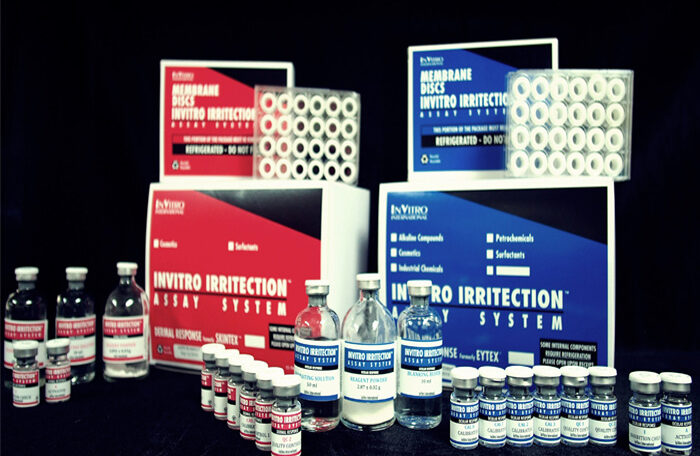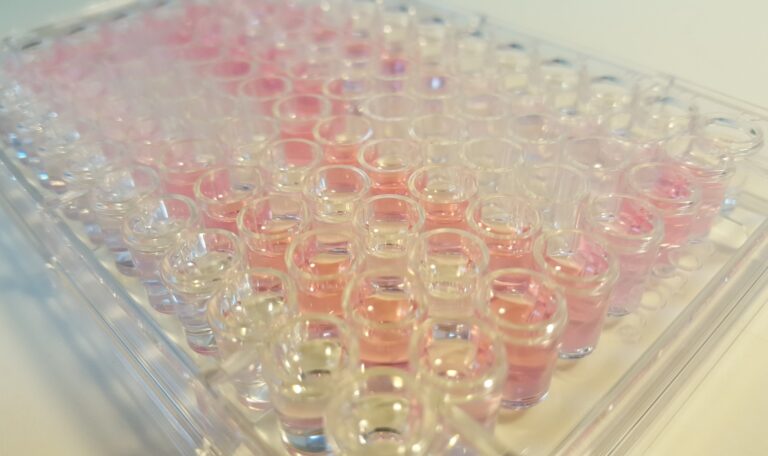 What is the Irritection® Assay System?
What is the Irritection® Assay System?
The Irritection® Assay System is a standardized, quantitative in vitro test method which utilizes changes of relevant macromolecules to predict the ocular and dermal irritancy of chemicals, mixtures and product formulations. The Irritection® Assay System consists of an ocular test, Ocular Irritection® (OECD 496) and dermal test, Irritection® Dermal.
Why Use the Irritection® Assay System?
- Ocular Irritection® (OI) is the only 100% non-animal ocular irritancy test with OECD adoption (TG496) that provides top level scientific credibility and legal support. Irritection® Dermal (ID) is the 30+ year companion technology to OI that provides GHS accepted results under weight of evidence.
- New products get to market faster (1-3 months faster) at half (or less) the cost, with a potentially distinguished marketing profile. Test results possible in 24-48 hours.
- Serving cosmetic, chemical, personal care, surfactant, adhesives and many other industries for 3 decades – both OI and ID are useful for GHS.
- The Irritection® assays are quantitative and highly reproducible, thus allowing comparative ranking of samples and formulations with great accuracy.
- Prior studies have demonstrated that the Irritection® Assay results can be correlated as high as 90% with those obtained in GHS testing and standard Draize tests.
How the Test Works
Ocular Irritection® Assay System
The corneal irritancy of test materials is known to be related to their propensity to promote denaturation and disruption of corneal proteins. The Ocular Irritection® Assay System is an in vitro test method that mimics these biochemical phenomena. This test consists of two essential components:
- A membrane disc that permits controlled delivery of the test material to a reagent solution and;
- A proprietary reagent solution that is composed of proteins, glycoproteins, lipids and low molecular weight components that self-associate to form a complex macromolecular matrix.
Controlled mixing of the test material and the reagent solution during the assay incubation period promotes protein denaturation and disaggregation of the macromolecular matrix. The changes in protein structure that are induced by the test material may be readily quantitated by measuring the resulting changes in turbidity (OD405) of the reagent solution.
Comparison of these optical density measurements to those produced by standard chemical irritants permits calculation of an “irritancy score” that has been shown to be directly related to potential human corneal irritancy of the test material.
 Dermal Irritection® Assay System
Dermal Irritection® Assay System
Chemicals that cause dermal irritation are known to induce alterations in the structure of keratin, collagen and other dermal proteins. The Dermal Irritection® Assay System is an in vitro test that mimics these biochemical phenomena.
This test also consists of two components:
- A membrane substrate that has been modified by covalently crosslinking a mixture of keratin, collagen and an indicator dye to it and;
- A reagent solution consisting of a highly organized globulin/protein macromolecular matrix.
Application of an irritant chemical to the membrane disc disrupts the ordered structure of keratin and collagen and results in release of the bound indicator dye. Additionally, dermal irritants induce changes in conformation in the globular proteins found in the reagent solution. The extent of dye release and protein denaturation may be quantitated by measuring the changes in optical density of the reagent solution at 450 nm (OD450).
Comparison of these optical density measurements to those produced by standard chemical irritants permits calculation of an “irritancy score” that has been shown to be directly related to the potential dermal irritancy of the test material. These results are accurate, reliable and produced faster at a fraction of the cost for in vivo assays.

